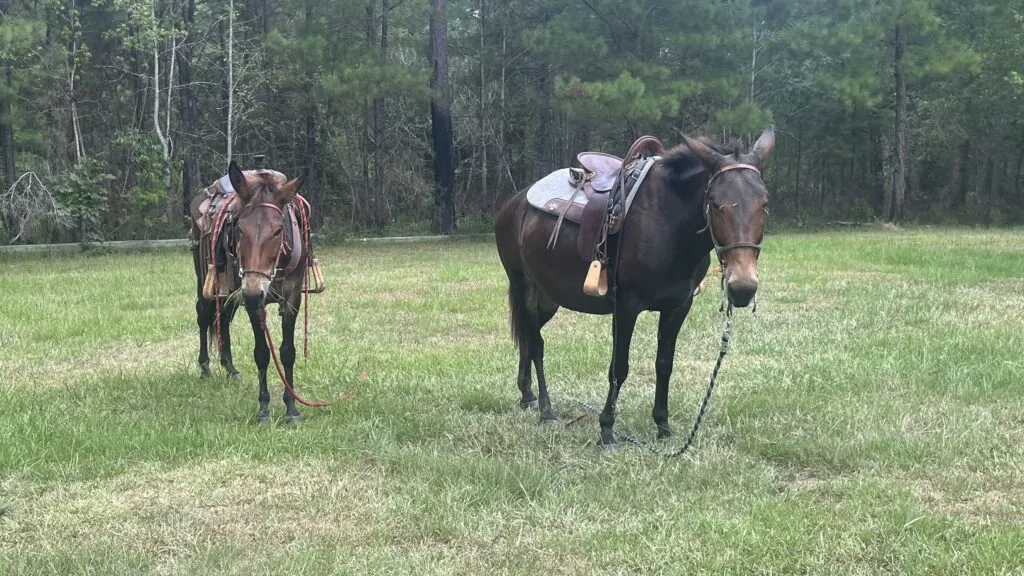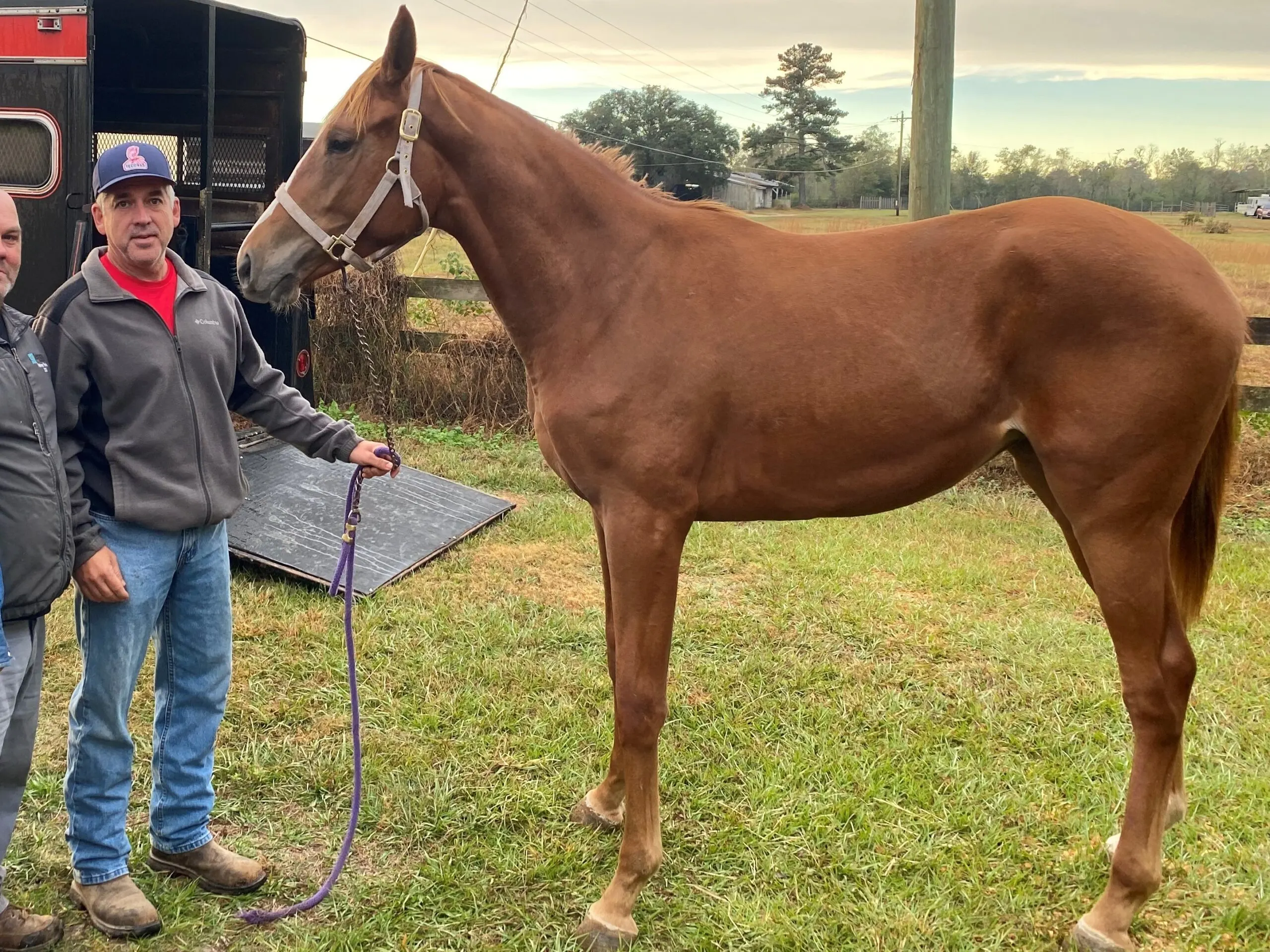Last updated: July 6, 2023
While my son and I walked through a friend’s barn, we heard the sounds of horses whinnying and donkeys braying. Pointing to a large stall with a horse and a donkey, he asked, “Why are they kept together?” I explained that those two animals are together to breed.
Breeding a horse and a donkey together produces a hybrid animal known as a mule. Mules have been used for centuries as working animals due to their unique combination of the strength and endurance of horses and the intelligence and sure-footedness of donkeys.
This blog post will provide a comprehensive guide to understanding and producing mules, including these hybrids’ history and genetic makeup, the breeding process, and their role in the equine world.
Understanding Equine Crossbreeding
Equine crossbreeding or hybridization is the process of breeding two different species together to produce a hybrid animal. Hybrid equines, also known as equid hybrids, are produced by breeding different members of the horse family, such as horses, donkeys, and zebras.
This practice has been used for centuries in horse breeding to create animals that possess the best traits of each parent. When it comes to horse-donkey breeding, the resulting hybrid is the mule.

The genetic makeup of horses and donkeys plays a crucial role in breeding. Horses have 64 chromosomes, while donkeys have 62. This means that when a horse and donkey are bred together, their offspring will have 63 chromosomes, which makes them sterile and unable to reproduce.
While mules are unable to reproduce, they do possess many desirable traits. They are known for their strength and endurance, as well as their intelligence and sure-footedness. Mules are also more resistant to disease and parasites than horses or donkeys.
Breeding for a Mule
There are a few things to consider when it comes to producing mules. The first step is selecting the parents. A mule is produced by breeding a male donkey (Jack) with a female horse (mare).
When picking a mare to mate with a donkey, it’s essential to consider how it acts and behaves. The mule foal gets its personality from its mom. Also, the baby mule learns how to act and behave from its mother during the first six months of life. So, choosing a friendly and easygoing mare is important.
In addition, choosing a mare with good conformation is crucial. It’s vital to pick one that is strong in the areas where donkeys are weakest: their backs, hips, and shoulders. So, when choosing a mare, look for one with a strong back, strong hindquarters, and long sloping shoulders.
It’s worth noting that you can produce a mule by breeding any horse breed with any donkey; however, some breeds are more commonly used for specific purposes.
For example, draft breeds such as Belgians and Percherons are used when you want to make a large mule for heavy work, while quarterhorses are used when people want a saddle mule.
Once the parents have been selected, the breeding process can begin. It’s important to note that Jacks are not stallions and their mating rituals differ, which can lead to difficulties in breeding mares. I suggest you check out this in-depth article about Jacks breeding habits.
After the foal is born, it’s essential to provide proper care. Mule foals require the same care as horses and donkeys. If you are not used to handling foals, you should have a knowledgeable person or vet you can consult.

I have a few friends that own and ride mules, and they wouldn’t want anything else. They claim they are easy to train and a pleasure to work with. Let’s look at some of the pros and cons of mules.
Pros of breeding mules include:
- Mules possess many desirable traits, such as strength and endurance, intelligence, and sure-footedness.
- They are more resistant to disease and parasites than horses or donkeys.
- Mules are easy to keep and stay healthy on less feed than horses.
- Mules are more tolerant to heat than horses.
- Mules are known for their longevity and hardiness.
- Mares can deliver a mule foal easier than a typical foal.
- They can be trained to do various tasks, from heavy labor to pack animals and trail riding.
Cons of breeding mules include:
- Mules are sterile and cannot reproduce.
- Breeding donkeys and horses to create mules can be challenging.
- A good mule is expensive.
- Horse tack doesn’t always fit a mule.
- Mules kick hard and can severely injure you.

Mule vs. Hinny
A mule is a cross between a male donkey (jack) and a female horse (mare), and a hinny is a cross between a male horse (stallion) and a female donkey (jenny). Hinnies are less common than mules because they are harder to breed and have lower survival rates.
Hinnies tend to be smaller and not as strong as mules, with a more horse-like appearance and less sure-footedness than mules. Regarding behavior, hinnies are said to be more independent than mules and act more like their donkey mother.
Hinnies are usually quieter, move slower than mules, and do things more carefully. This can make them seem hard to understand and not easy to predict, but they don’t get scared easily.
However, the characteristics of hinnies can vary significantly because they are a product of crossbreeding and the difference in the characteristics of their parents.
Here is a YouTube video that provides some helpful information about mules.
Mules in Modern Agriculture and Industry
Mules have been used for centuries as working animals; they are strong and sure-footed, making them well-suited for tasks such as plowing and hauling heavy loads.
Mules are also known for their intelligence and trainability, making them popular for pack animals and trail riding. What I found surprising when researching for this article was learning that the mule population has dramatically declined in the US and globally.
In my region, mules are popular and in demand. A good mule sells for well over $15,000.00. There are efforts to preserve and promote the mule as a valuable working animal. Some organizations, such as the American Mule Association, work to promote the use of mules and educate people about their capabilities.

Wrap Up
In this blog post, we have provided a comprehensive guide to understanding and producing mules. We’ve covered the history and genetic makeup of these hybrids, the breeding process, and their role in modern agriculture and industry.
Mules possess a unique combination of characteristics from both horses and donkeys that make them well-suited for many tasks. Here is a chart that shows some advantages of mules over horses and donkeys:
| Trait | Mules |
|---|---|
| Endurance | Strong, can work for longer periods than horses or donkeys |
| Sure-footedness | Natural sure-footedness, can navigate rugged terrain, and have greater balance. |
| Disease and parasite resistance | More resistant to disease than horses or donkeys |
| Feed efficiency | Can stay healthy on less feed than horses |
| Heat tolerance | Mules can tolerate extreme heat better than horses. |
| Intelligence and trainability | Mules are smart and quick learners. |
| Versatility | Wide range of uses, from heavy labor to recreational riding, suitable for numerous disciplines, including dressage. |
It’s important to note that these are generalizations, and mules vary greatly in their abilities and characteristics based on their breeding.

FAQs
What can horses cross-breed with?
Horses can cross-breed with other members of the equine family, including other horses, donkeys, and zebras. Breeding horses with other equines can produce a variety of hybrids, such as mules and hinnies (cross between a horse and a donkey), zorses (cross between a horse and a zebra), and zony (a cross between a pony and a zebra).
Are mules harder to ride than horses?
Yes, most mules are easier to ride than horses because of their sure-footedness and comfortable gait. Mules are also less prone to spooking and bolting than horses.
Meet Miles Henry
An avid equestrian and seasoned racehorse owner, Miles Henry brings his extensive experience to the equine world, proudly associating with the AQHA, The Jockey Club, and various other equine organizations. Beyond the racetrack, Miles is an accomplished author, having published various books about horses, and is a recognized authority in the field, with his work cited in multiple publications.
🔗 Connect with Miles:
Twitter
Facebook
YouTube: Check out race highlights, horse care tips, and more!

